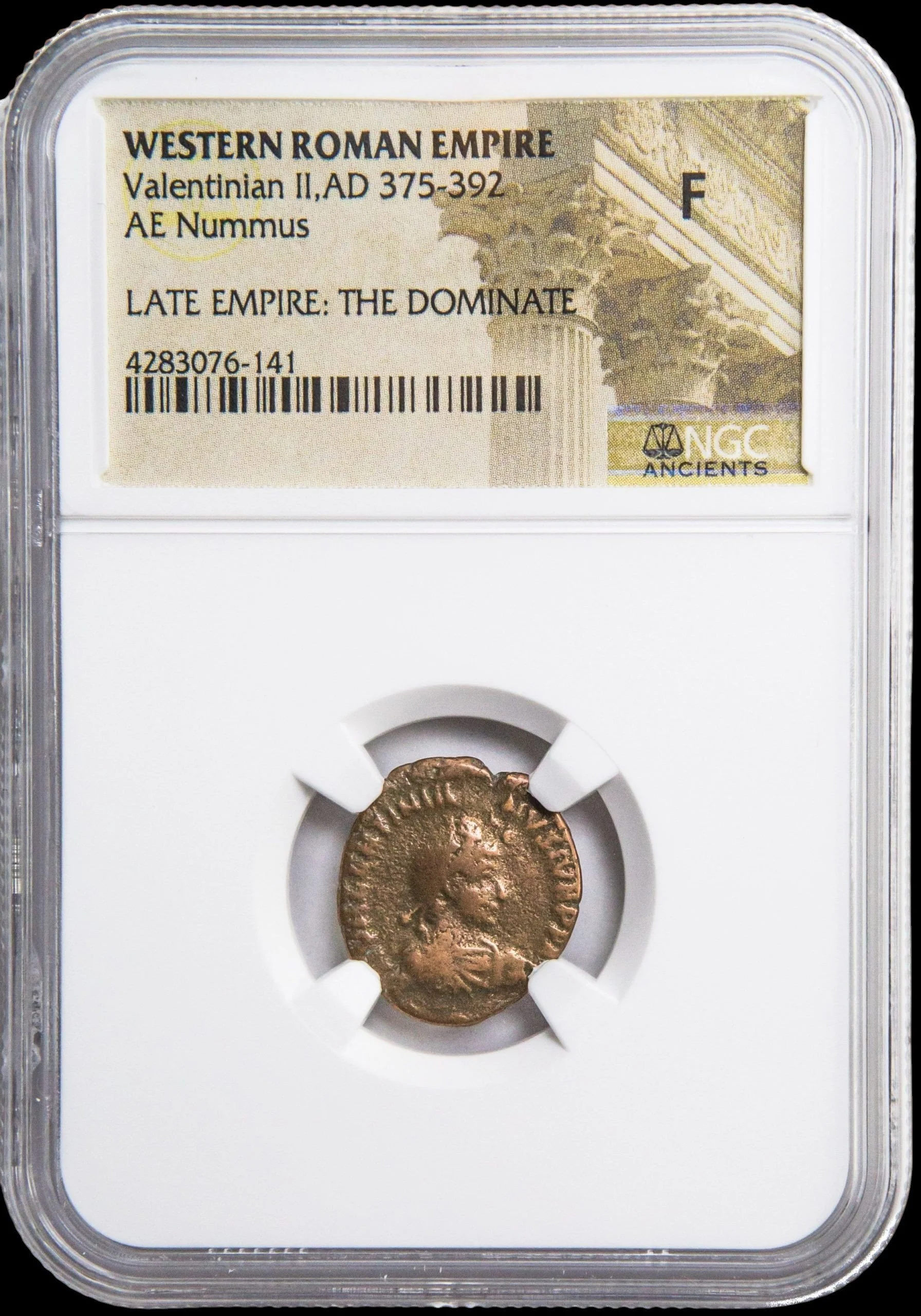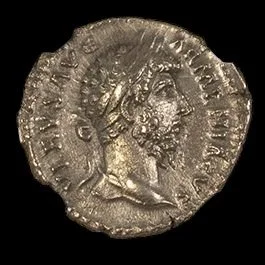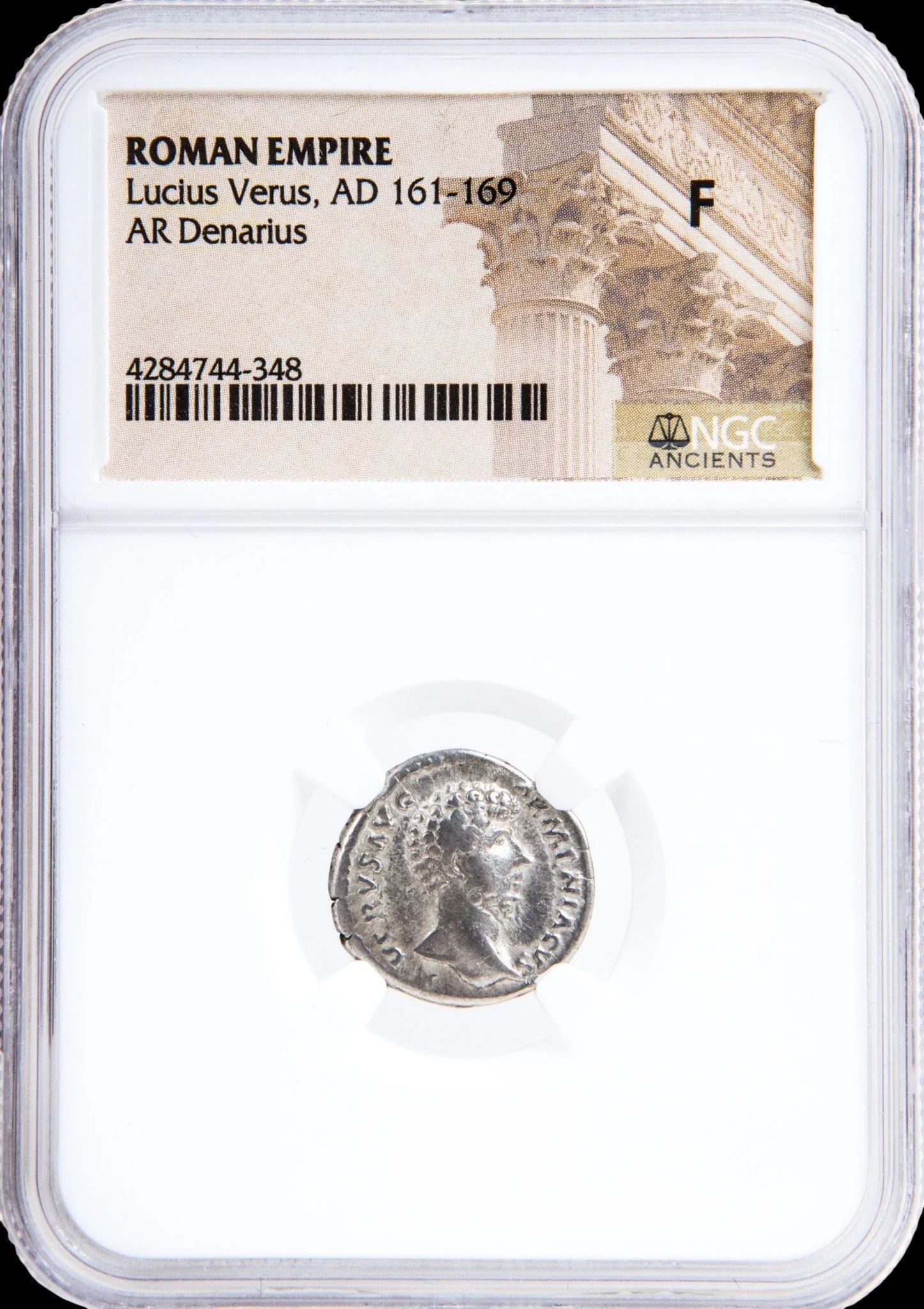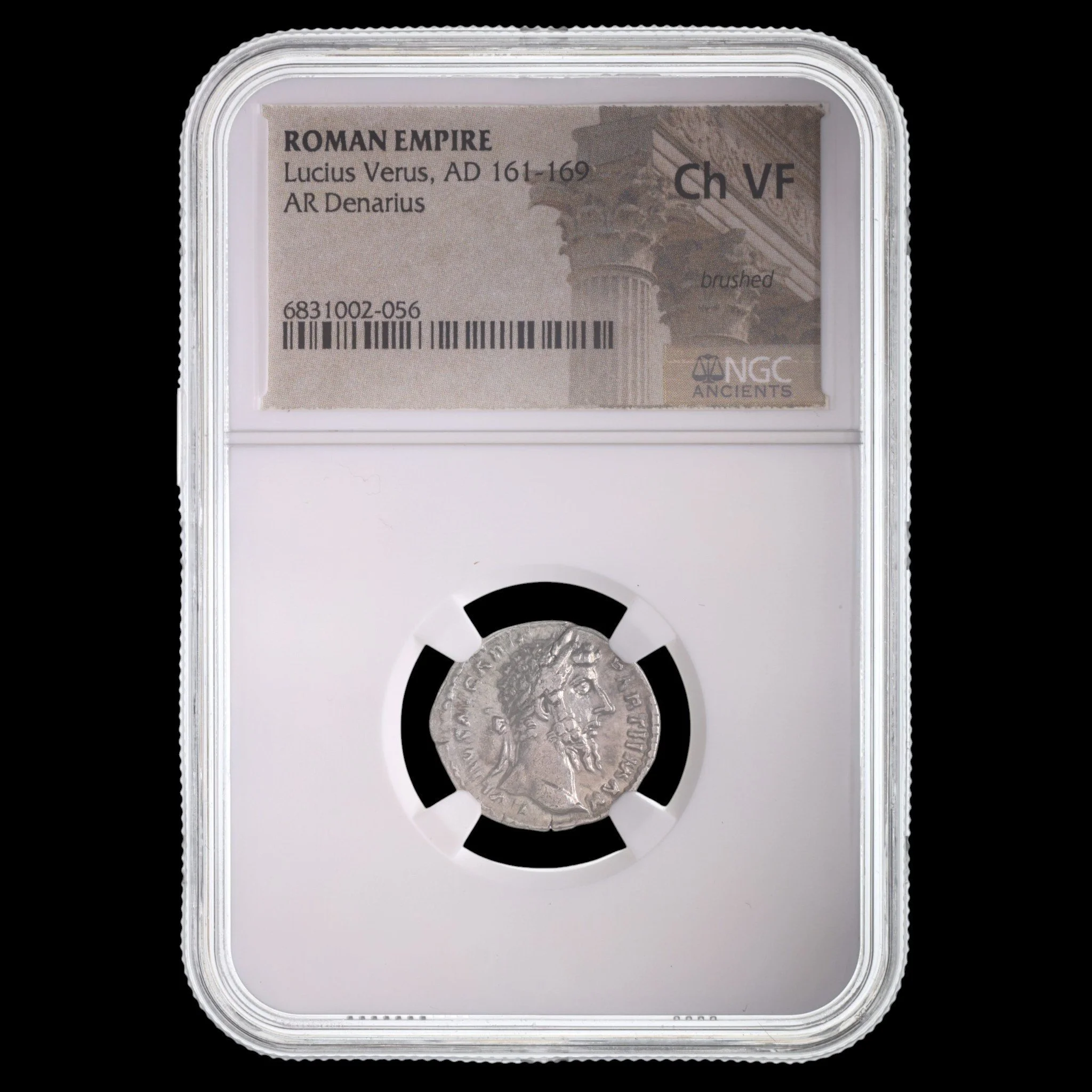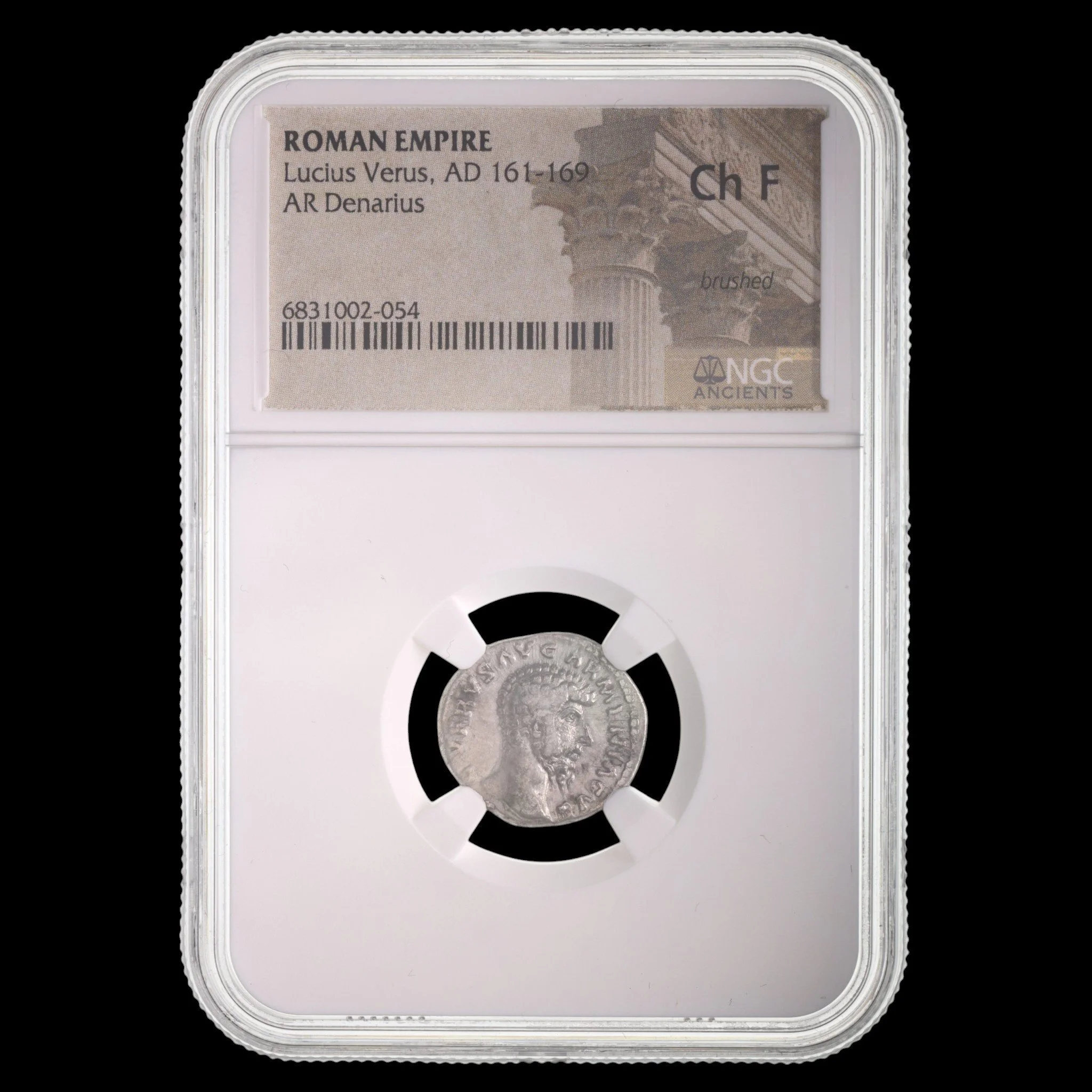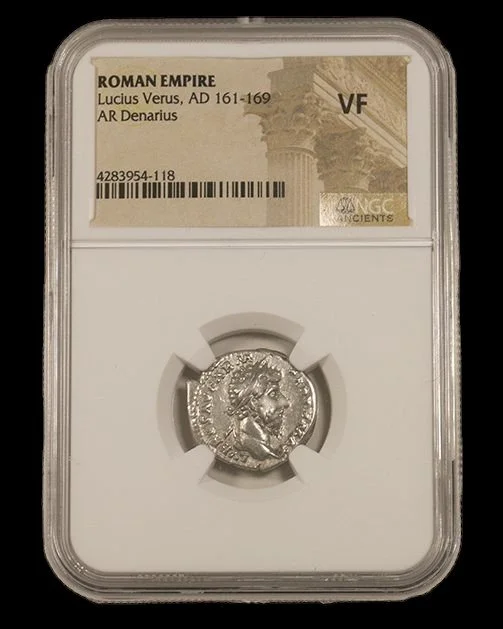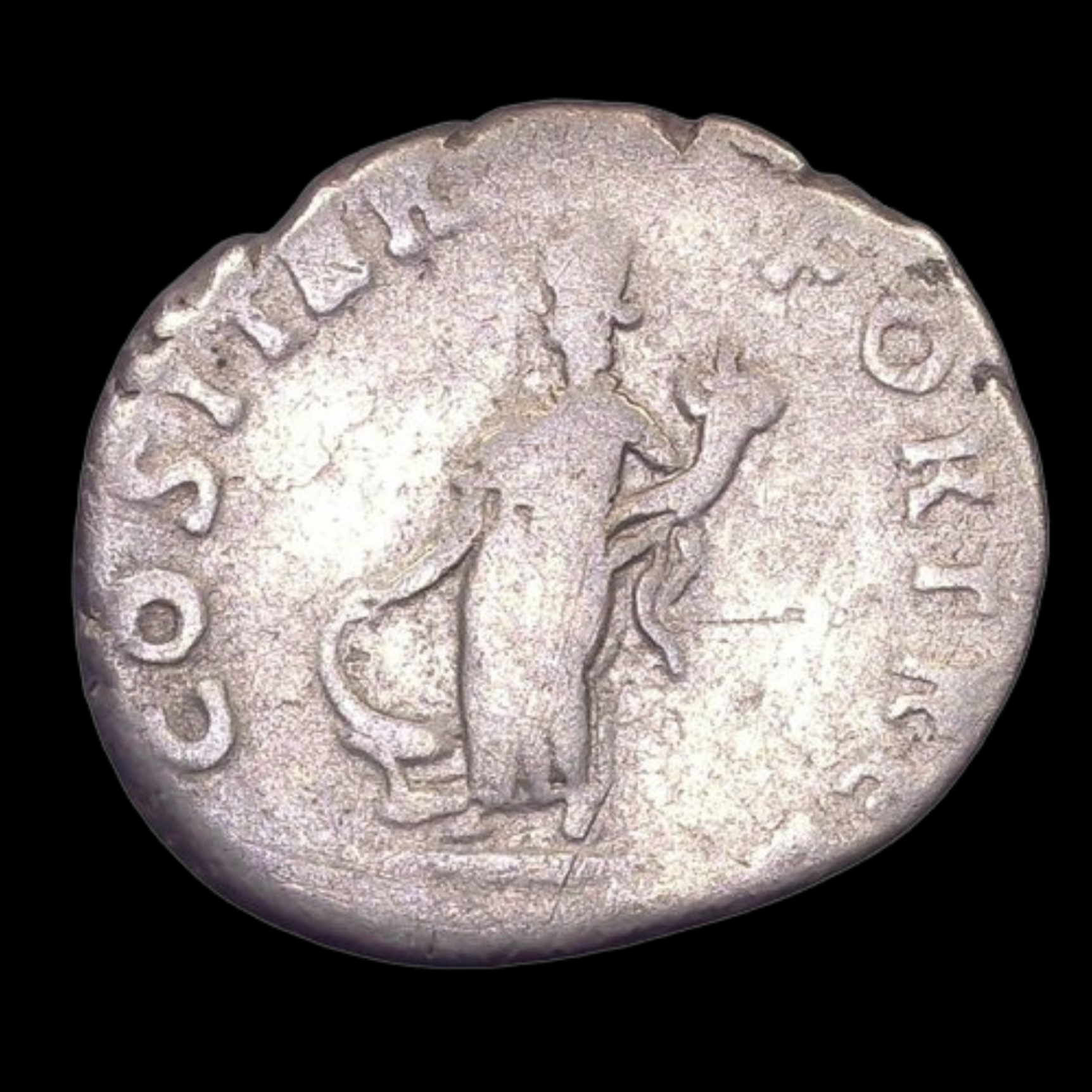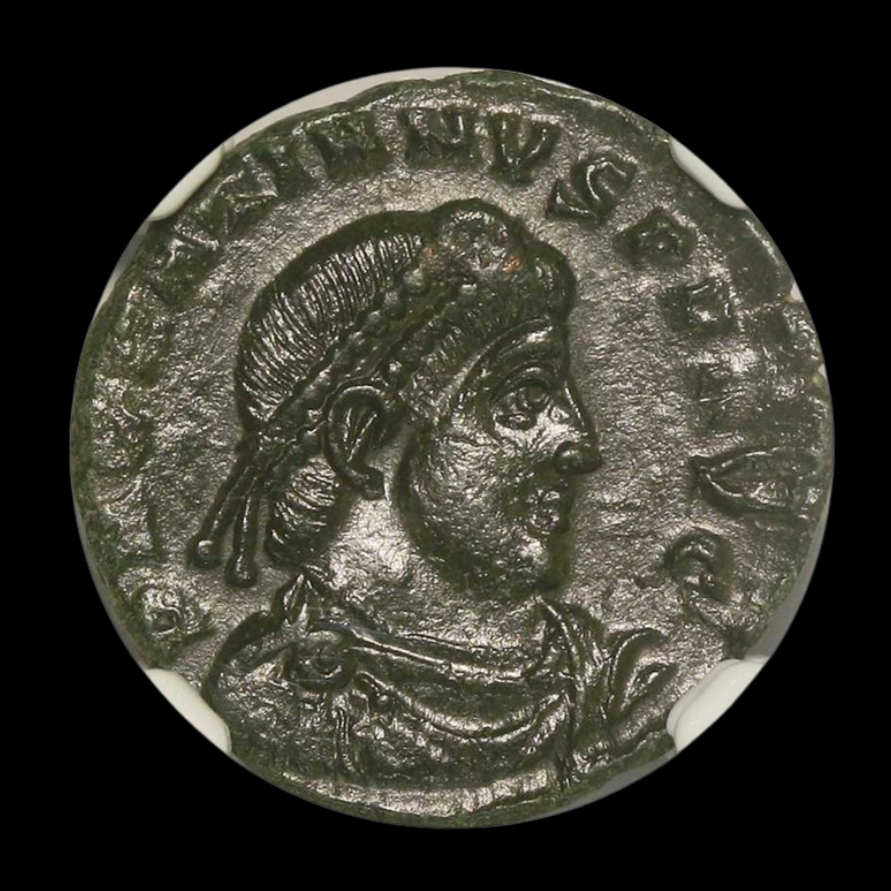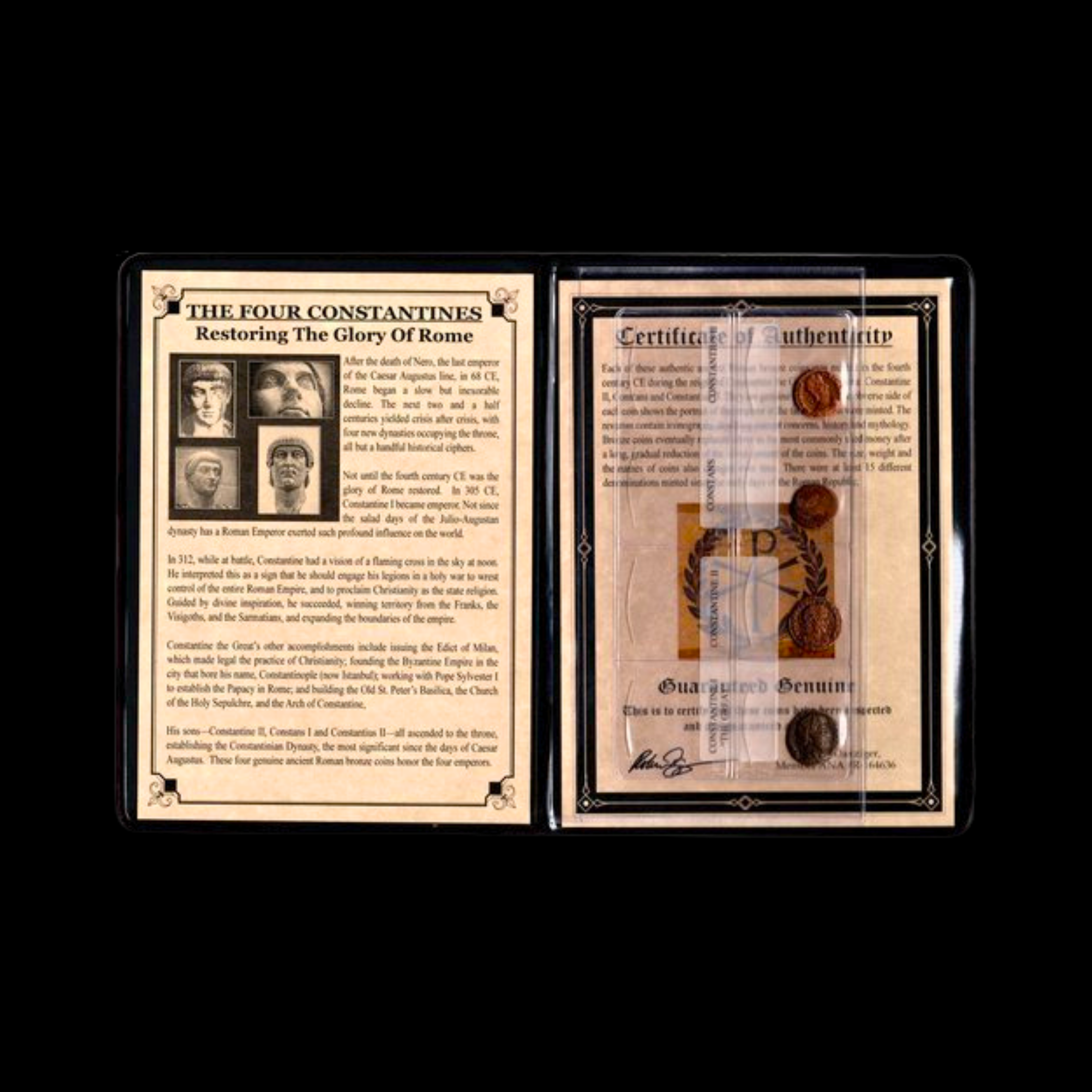 Image 1 of 6
Image 1 of 6

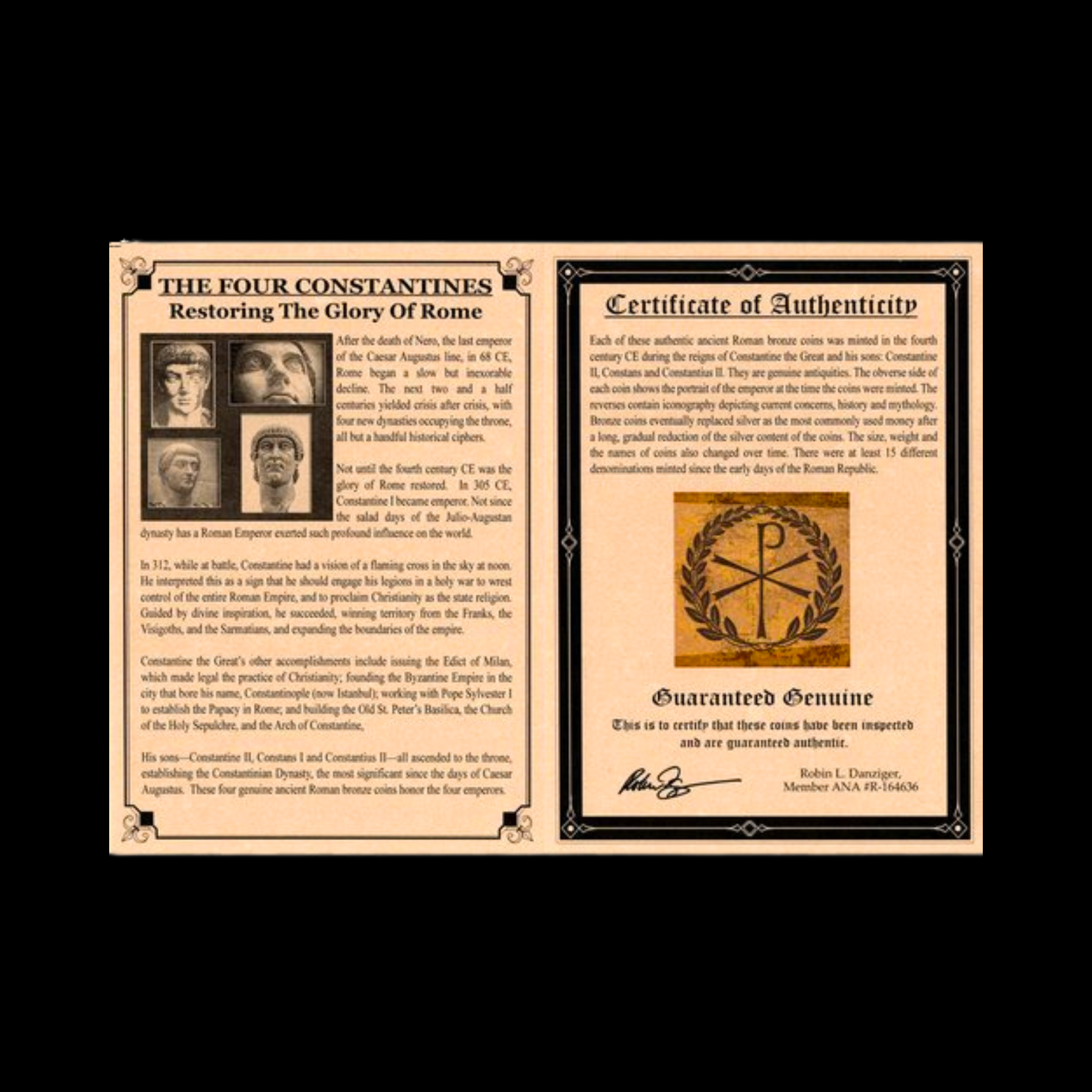 Image 2 of 6
Image 2 of 6

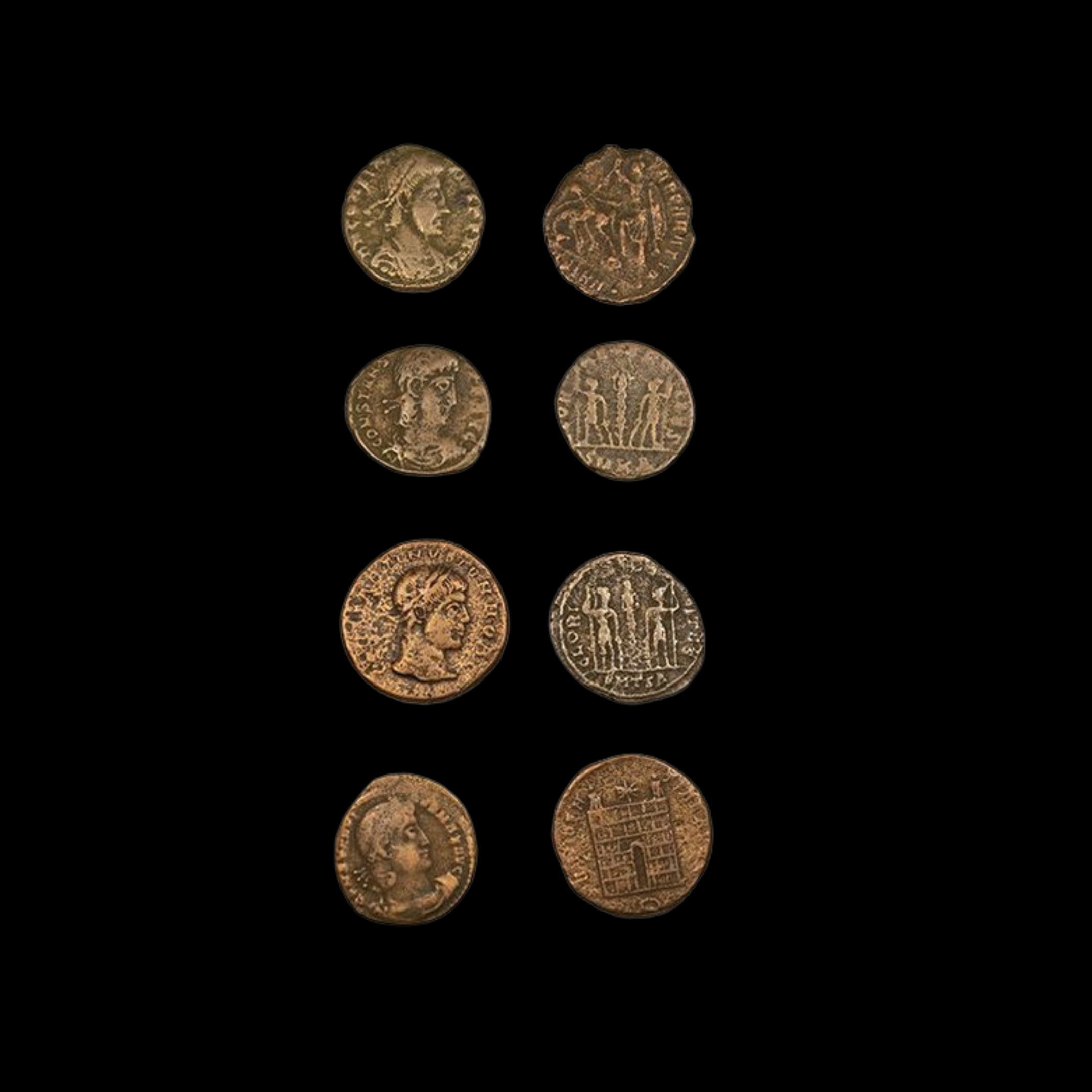 Image 3 of 6
Image 3 of 6

 Image 4 of 6
Image 4 of 6

 Image 5 of 6
Image 5 of 6

 Image 6 of 6
Image 6 of 6







The Four Constantines – A Bronze Coin Album of Constantine the Great and His Sons (Constantine II, Constantius II, and Constans), Rulers Who Led Rome’s Transformation into the Christian Empire
This collection features four bronze coins from the Constantine Dynasty, which ruled the Roman Empire during a pivotal transition period in the 4th century CE. The Constantinian era marked a crucial turning point in Roman history, as Christianity began its transformation from a persecuted religion to the empire's dominant faith. Each coin represents one of the key rulers from this dynasty, providing tangible connections to a period of significant religious and political change.
Coin Description:
Front side: Each coin displays the profile portrait of its respective Constantine ruler, typically facing right, wearing either a laurel wreath, imperial diadem, or helmet. The portraits showcase the artistic conventions of late Roman imperial imagery with varying levels of detail depending on the preservation quality.
Back side: The reverse designs vary but often feature military themes, religious symbols, or personifications of Roman virtues. Common motifs include soldiers with standards, the Chi-Rho symbol (☧), victory goddesses, or camp gates.
Technical Details:
Bronze alloy composition (primarily copper with tin and other trace metals)
AE3/AE4 denominations (small bronze coins common in the late Roman monetary system)
Reference numbers: CONST4ALB (album reference number)
Authenticity verified but specific grading varies by individual specimen
Minted approximately 306-363 CE
Historical Significance:
The Constantine Dynasty fundamentally reshaped the Roman Empire during the early 4th century CE. Beginning with Constantine I "the Great" who legalized Christianity following his victory at the Milvian Bridge in 312 CE, these rulers presided over a transformative period that saw the empire's religious landscape permanently altered. The dynasty ruled from various capitals including Rome, Constantinople (modern Istanbul, Turkey), Trier (modern Germany), and Nicomedia (modern İzmit, Turkey). These modest bronze coins would have been everyday currency for common citizens throughout the empire, used for small transactions in marketplaces from Britain to Egypt. The varying portraits and symbols on these coins reflect the dynasty's evolving relationship with traditional Roman religious imagery and the gradual incorporation of Christian symbolism into official state iconography.
This collection features four bronze coins from the Constantine Dynasty, which ruled the Roman Empire during a pivotal transition period in the 4th century CE. The Constantinian era marked a crucial turning point in Roman history, as Christianity began its transformation from a persecuted religion to the empire's dominant faith. Each coin represents one of the key rulers from this dynasty, providing tangible connections to a period of significant religious and political change.
Coin Description:
Front side: Each coin displays the profile portrait of its respective Constantine ruler, typically facing right, wearing either a laurel wreath, imperial diadem, or helmet. The portraits showcase the artistic conventions of late Roman imperial imagery with varying levels of detail depending on the preservation quality.
Back side: The reverse designs vary but often feature military themes, religious symbols, or personifications of Roman virtues. Common motifs include soldiers with standards, the Chi-Rho symbol (☧), victory goddesses, or camp gates.
Technical Details:
Bronze alloy composition (primarily copper with tin and other trace metals)
AE3/AE4 denominations (small bronze coins common in the late Roman monetary system)
Reference numbers: CONST4ALB (album reference number)
Authenticity verified but specific grading varies by individual specimen
Minted approximately 306-363 CE
Historical Significance:
The Constantine Dynasty fundamentally reshaped the Roman Empire during the early 4th century CE. Beginning with Constantine I "the Great" who legalized Christianity following his victory at the Milvian Bridge in 312 CE, these rulers presided over a transformative period that saw the empire's religious landscape permanently altered. The dynasty ruled from various capitals including Rome, Constantinople (modern Istanbul, Turkey), Trier (modern Germany), and Nicomedia (modern İzmit, Turkey). These modest bronze coins would have been everyday currency for common citizens throughout the empire, used for small transactions in marketplaces from Britain to Egypt. The varying portraits and symbols on these coins reflect the dynasty's evolving relationship with traditional Roman religious imagery and the gradual incorporation of Christian symbolism into official state iconography.






